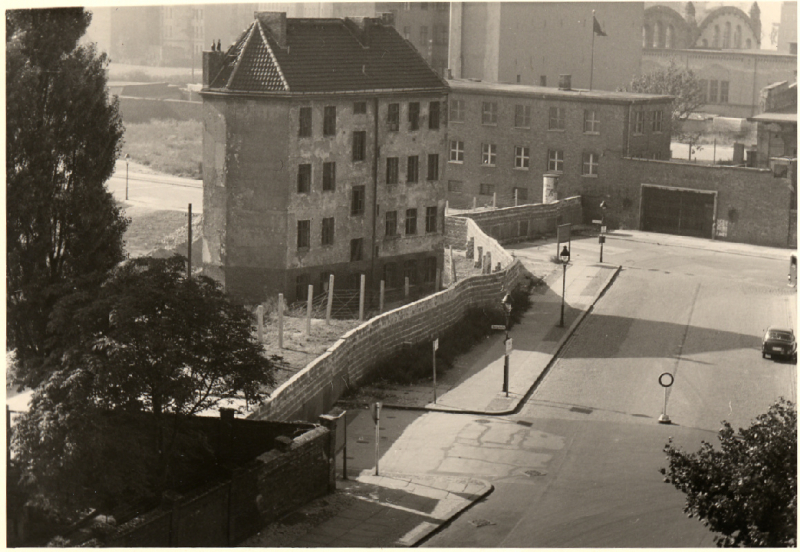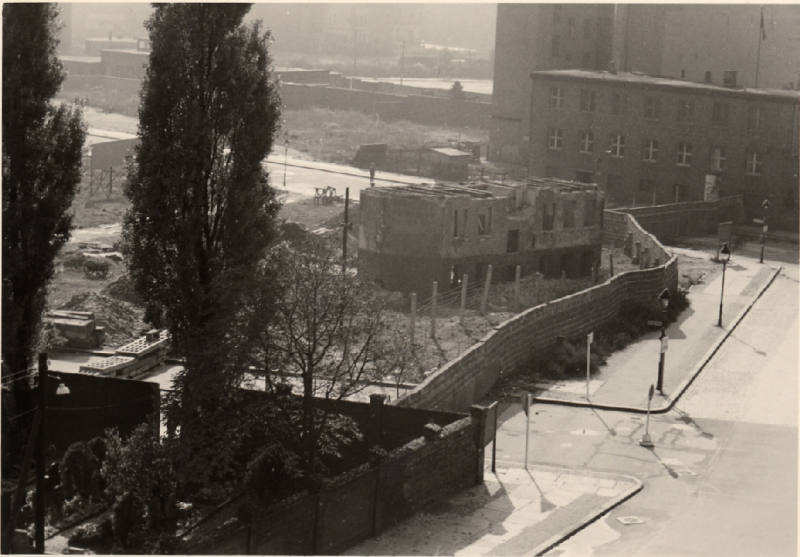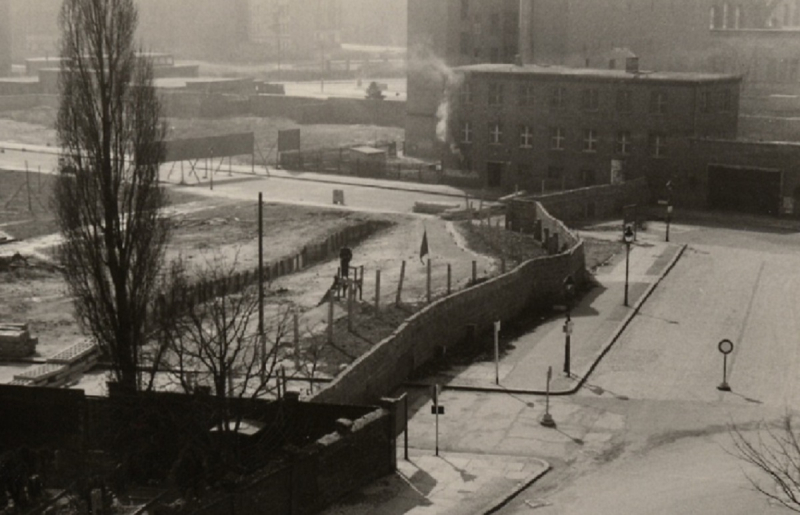Walled-Off Bergstrasse
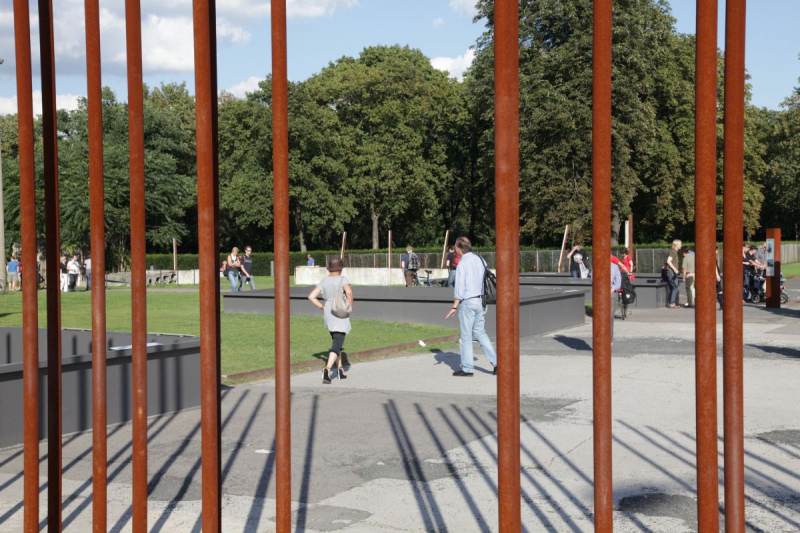
© Stiftung Berliner Mauer
You are now standing where the former patrol road crosses Bergstrasse, the only street in Berlin that continues to be divided by the Wall today. When the Wall was built in 1961, approximately 300 streets in the city were divided and became dead-ends. Bergstrasse had previously connected the Wedding and Mitte districts. It had existed since 1752. But when the Wall was built, the street on the east side disappeared beneath the border grounds. It was excavated in 2009. Now you can see the original road surface and curb from 1961.
On the East Berlin side of the Wall, Bergstrasse ran alongside the cemetery of the Sophien parish, a Protestant church congregation. Before the Wall was erected, the cemetery extended up to Bernauer Strasse. But in 1962, graves were moved and the grounds were leveled to make room for the new border fortifications.
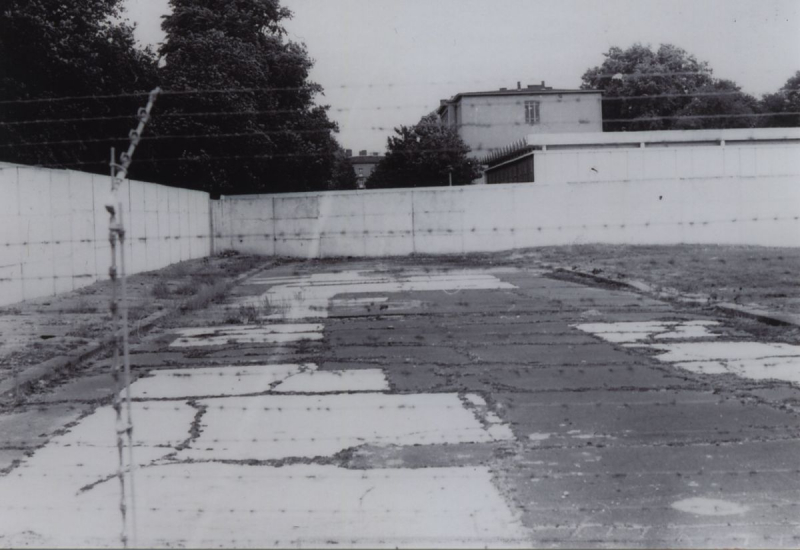
Blick durch den Grenzstreifen entlang der vermauerten Bergstraße auf die Hinterlandmauer, 1983 © Bundesarchiv Militärarchiv
You are now standing in the middle of the former border strip. If you look towards Bernauer Strasse, the inner wall will be behind you. This inner wall closed off the border grounds from the East Berlin side. A piece of the inner wall has been preserved near Bergstrasse. You can actually see two different inner walls here. This is because the older inner wall was simply left standing when the border fortifications were expanded and the border strip was straightened. The only preserved segments of the second inner wall stand to your right on the Sophien cemetery and on Bergstrasse. Steel posts indicate where the inner wall had stood alongside the patrol road. The large photograph on the side of the building shows you what the border strip here looked like in 1989/90. If you turn towards Bernauer Strasse, you’ll see original pieces of the Berlin Wall. Today both sides of the Wall – even the east side – are covered in graffiti, which was not the case before the Wall fell.
When the memorial was being established in the late 1990s, no one was interested in reconstructing the border grounds. Instead, the decision was made to conserve the original relics of the border fortifications according to historic preservation measures. At places where the original structure no longer exists, weathering steel has been used to help the visitor better imagine what the border strip once looked like. The poles of weathering steel here, for example, show where the Berlin Wall had stood on Bernauer Strasse.
